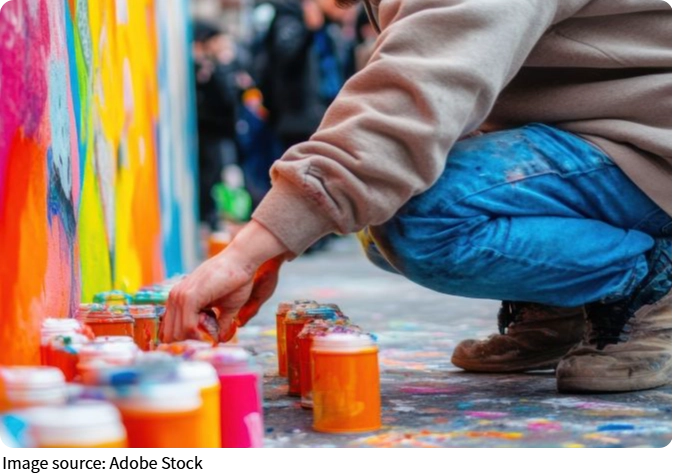Visual Emotional Expression

Have you ever found it hard to put your feelings into words? We've all been there. Sometimes, the best way to express how we feel is not through language but through art.
Visual art gives us a powerful and personal way to share emotions—whether it's joy, sadness, love, or uncertainty.
In this article, we'll explore how we can use visual art to express personal emotions. Whether you love painting, photography, digital art, or collage, this is something everyone can try—no formal training needed!
Why Visual Art Connects with Emotions
Art has a unique ability to speak where words fail. Shapes, colors, textures, and composition all evoke emotions, often on a subconscious level.
When we create visual art, we naturally pour our inner world into what we make. The process helps us understand ourselves better—and invites others to connect with our experiences.
So when we feel the need to express something deep or difficult, visual art can be a healing and powerful outlet.
Choosing a Medium That Resonates
First, let's think about the medium we want to use. Different art forms lend themselves to different moods and styles. Here are some options to consider:
• Painting: Great for expressing fluid, layered emotions through color and texture.
• Photography: Captures moments, mood, and subtle emotion through light and composition.
• Collage: Combines diverse elements to explore complex or fragmented feelings.
• Drawing: Allows for both spontaneous sketches and detailed, meditative work.
• Digital art: Offers flexibility and tools for experimenting with style and tone.
We should pick what feels most natural to us—or try a few and see what resonates.
Using Color to Convey Mood
Color is one of the most powerful tools we can use to communicate emotion visually. Here's a simple guide:
• Red: Intensity, passion, anger, love
• Blue: Calm, sadness, serenity, loneliness
• Yellow: Happiness, energy, optimism
• Green: Growth, renewal, balance
• Black/gray: Grief, emptiness, mystery
• White: Clarity, peace, simplicity
When we choose our color palette intentionally, we help viewers intuitively feel the emotion behind our work.
Exploring Shapes and Lines
Beyond color, shapes and lines also play an emotional role:
• Flowing curves: Softness, gentleness, grace
• Jagged edges: Tension, conflict, unease
• Vertical lines: Strength, stability
• Horizontal lines: Calm, grounding
• Spirals and circles: Wholeness, cycles, inner focus
By paying attention to the forms we use, we can subtly guide how the viewer experiences the emotion within the piece.
Letting the Process Lead
One of the most important things to remember when creating emotional art is to trust the process.
We don't need to plan everything or aim for perfection. In fact, some of the most moving works come from spontaneous expression. Here's a simple way to start:
1. Tune in: Before creating, take a moment to check in with your feelings.
2. Choose materials: Let your mood guide your choice of colors, tools, and surfaces.
3. Create freely: Allow yourself to work without judgment or expectations.
4. Reflect: After finishing, take time to look at what you made and consider what it reveals about your emotions.
This process itself can be deeply therapeutic and insightful.

Sharing or Keeping It Private
Sometimes we create art purely for ourselves. Other times, we may want to share it with others.
Both are valid choices. Sharing can foster connection and inspire empathy. Keeping a piece private can serve as a personal record of growth and healing.
Whatever path we choose, what matters most is the authenticity of the expression.
Final Thoughts: Your Emotions, Your Art
In the end, visual art is one of the most personal ways we can express who we are and how we feel. There is no "right" or "wrong" approach. What matters is that the work speaks to you first.
So why not give it a try? The next time you're feeling something deeply—whether joy, grief, excitement, or uncertainty—pick up a brush, a pen, or your camera and start creating.
We'd love to know: Have you ever used art to express emotions? What did the experience feel like for you? Let's keep this conversation going and encourage each other to explore the power of visual storytelling.
Happy creating—and may your art reflect your beautiful inner world.


